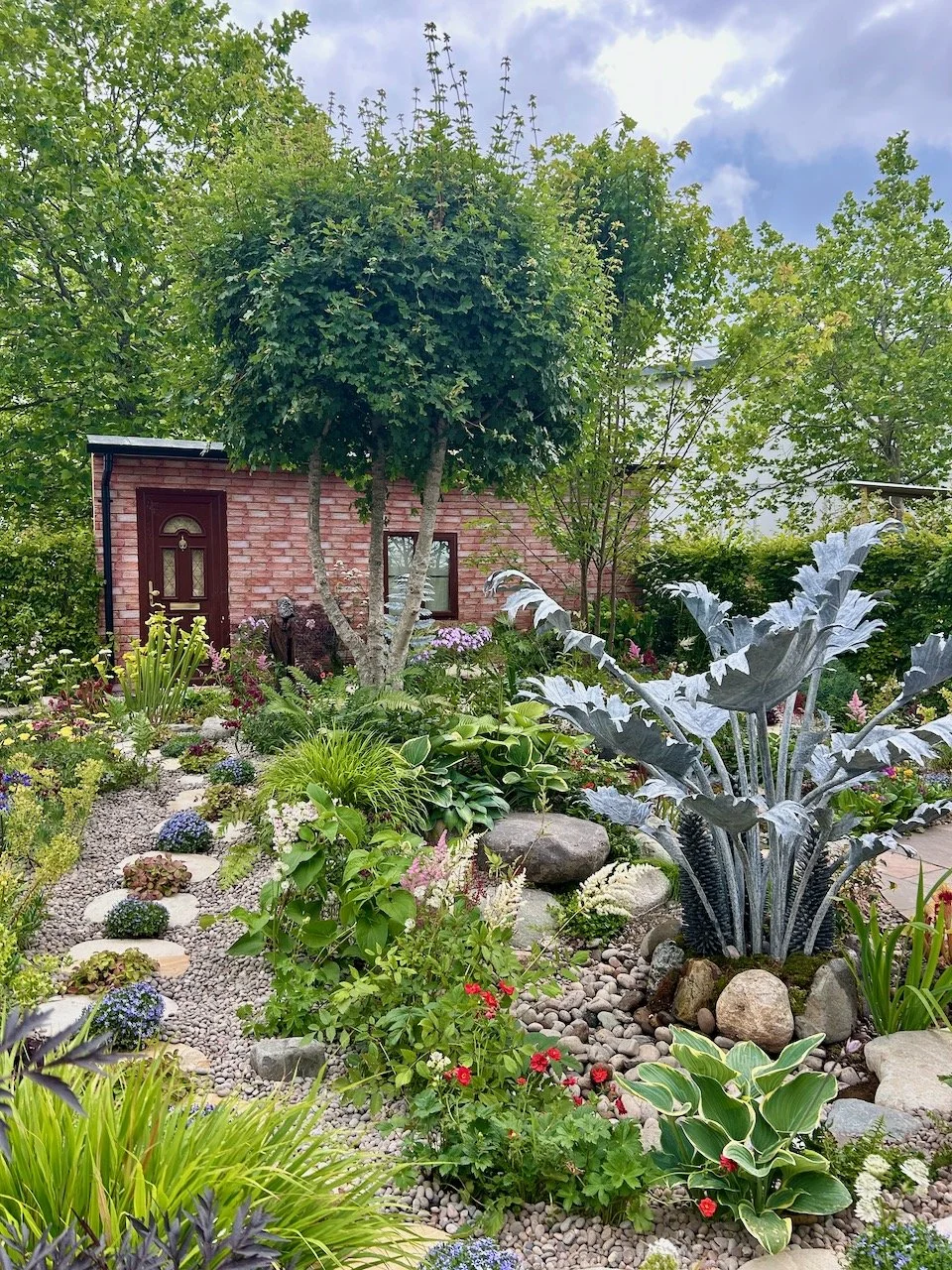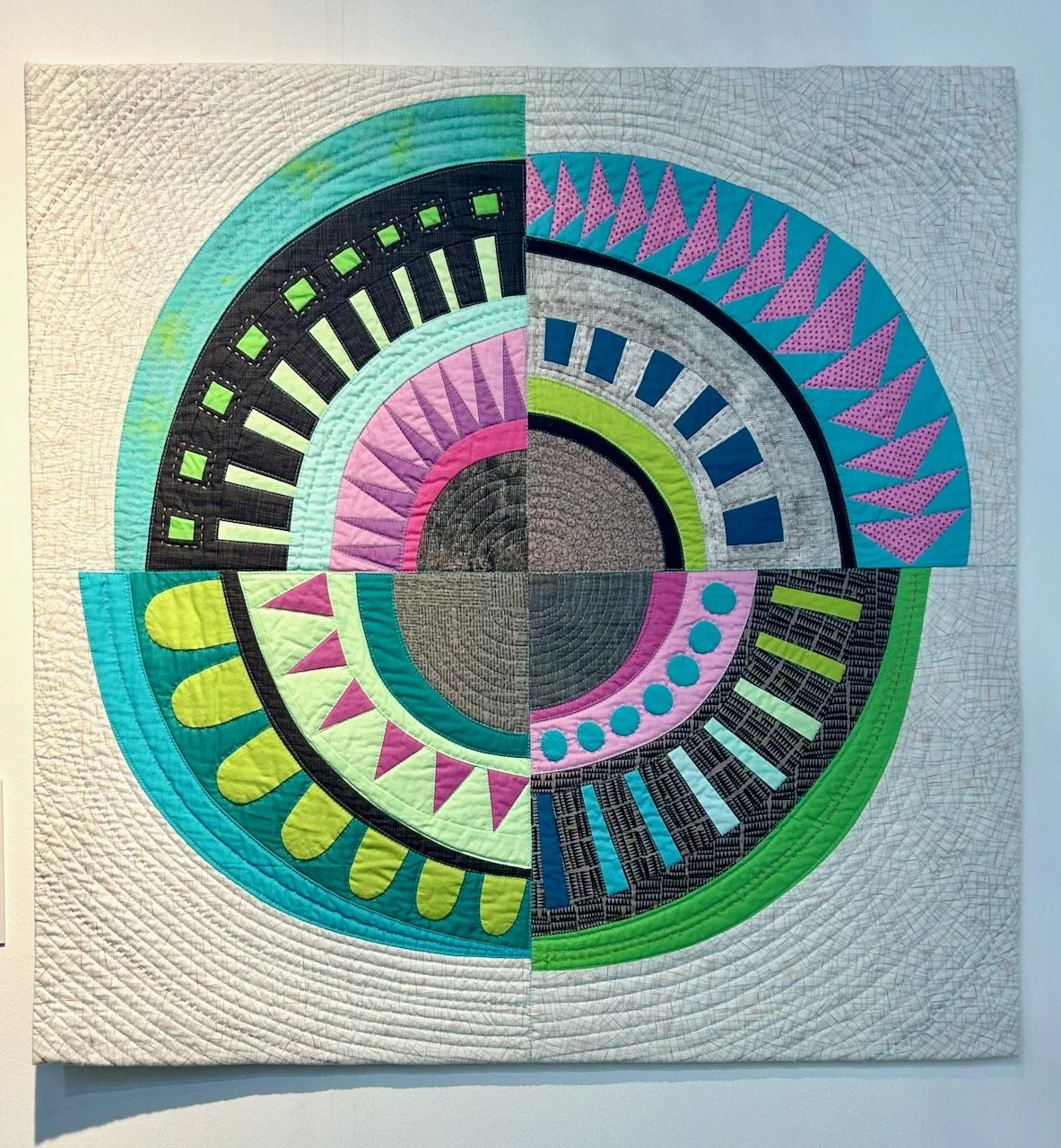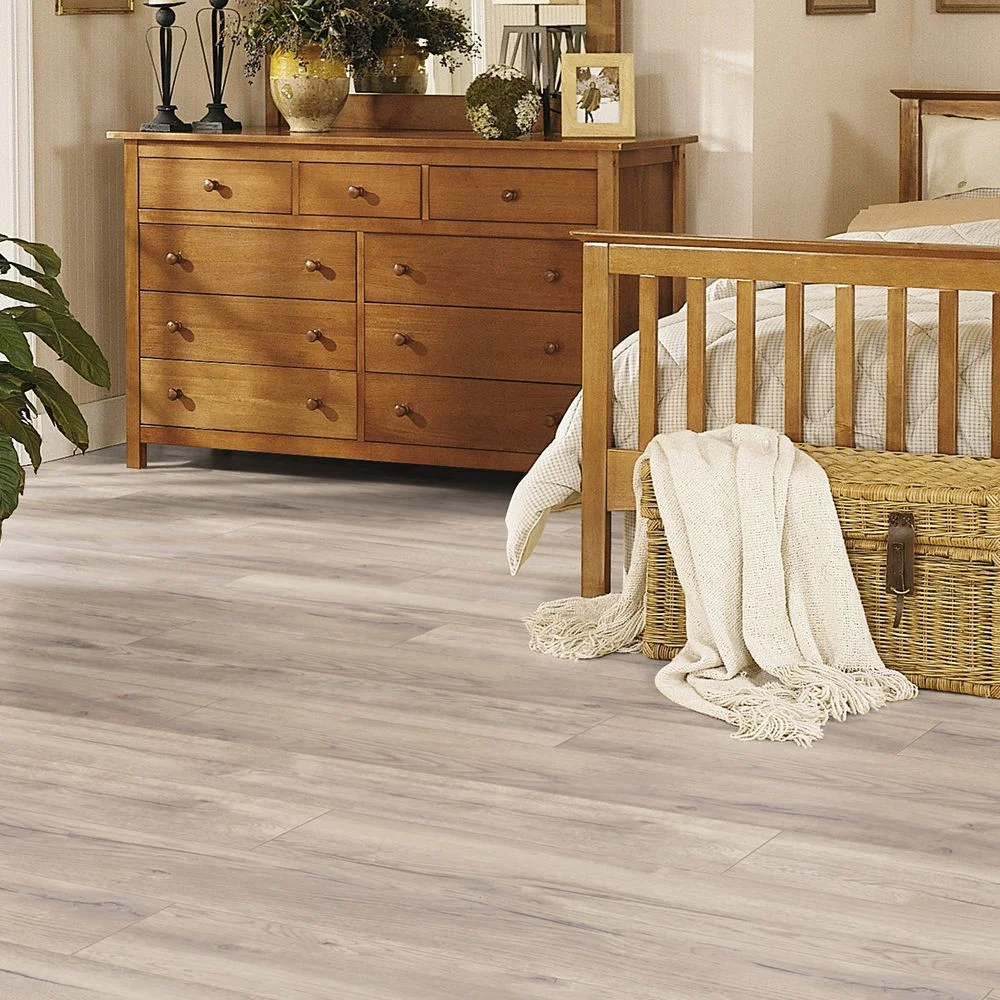You'll know that I'm a fan of wooden floors, but moving here was my first encounter with them as before that my only experience with non-carpeted floors was the laminate flooring in my kitchen and hallway. I was going to say I'd installed it, but that wouldn't be entirely true as dad did it! So when Direct Wood Flooring got in touch about sharing where laminate flooring was suitable for, I was keen to know more.
We're still considering our next house project - our conservatory - and how much, or how little we tackle. There's some obvious contenders that need to be done, but the flooring is on our possibles list. We think it's a type of oak effect laminate flooring and the decision really is if we replace it or not.
Laminate flooring has developed immensely since the last time I shopped for it, there is now so much choice. It's manufactured from a high density fibreboard and covered in a decorative layer. This can replicate the designs of premium solid wood and stone tiles in a convincing way, with the advantage over stone that it's warmer underfoot. The advances in technology means it has come a long way from its humble beginnings and there's now a huge array of quality patterns and styles to choose from.
Which is great from a choice perspective, less so for actually having to choose one!
Photo courtesy of Direct Wood Flooring
So where can you fit laminate flooring?
And the real answer to that depends on the type of laminate flooring, as while its composition makes it a versatile range, as with many flooring choices it can struggle under the pressure of excessive moisture, so flooring experts recommend avoiding fitting laminate in high risk areas and treat spillages as quickly as possible.
Living room
The vast range of finishes, colours, patterns and designs mean it's a great choice for living areas and you'll find a style that's perfect for you whether you're looking something traditional for a family home or something more contemporary.
Photo courtesy of Direct Wood Flooring
Dining room
The practicality of laminate flooring performs well in dining rooms, and if there is the odd food or drink spillage then it's easy to clear up.
Kitchen
This is one of the areas that providers recommend caution, but as long as any spillages are tended to quickly I think it should be fine. As I said at the start of the post this is one of the areas that I had laminate flooring in my last house, and it was entirely practical. At the time I had four cats and they ate in the kitchen, I found it easier to keep clean than the mat that I'd had in there beforehand.
Excessive moisture can cause the laminate to lift, warp or even crack - thankfully I never experienced that - so it is important to be attentive to spills quickly to prevent this.
Photo by Dariusz Sankowski on Unsplash
Conservatory
Conservatories can often be more unusual shapes than conventional rooms - not always, ours is rectangular - but Direct Wood Flooring say this makes laminate perfect for your conservatory. The click system makes joining the boards fast and efficient as a floating installation doesn't require any adhesive. It simply clicks together.
You might think laminate wouldn't be suitable for conservatories as the temperatures fluctuate - yes British Summer Time, I'm looking at you! - but all you need to do is leave space around the edge of the room to allow for it to expand, and it's easy to hid this with your skirting or a piece of quadrant. We have this with our current wooden floors, so is quite a normal approach.
Hall, Stairs & Landing
These are all high traffic areas so while laminate works well in these areas it's important to get a laminate that is capable of withstanding lots of use. It can make a great first impression too when people arrive at your home.
In my house, I had a carpet runner on the stairs and landing, so only installed laminate in the hallway and into the kitchen. With the laminate panels running from front to back of the house it gave the impression that my house was longer than it actually was from the front door. In the wider areas I used some rugs to break up the space, or that was the plan anyway...
You know how cats can sometimes have a funny half hour? Well imagine that four times over, it seems that one of their favourite past times in their funny half hour was to launch themselves onto the rug near the bottom of the stairs and to "surf" along the floor. Quite funny to watch them as they were definitely doing it on purpose, but equally easy to stop them with some of that rug-grip felt. I think I spoiled their fun though...
Bedroom
Laminate copes well in bedrooms providing a neutral setting to the rest of your decor; for maximum comfort consider installing a quality underlay, as as with most floor coverings this makes all the difference.
Photo courtesy of Direct Wood Flooring
Bathroom
You can install laminate flooring in bathrooms, but you'll need to make sure it's waterproof as it can really struggle in this environment, and well, that's not surprising is it?
One thing that I'd urge you to consider with laminate flooring though (wherever you install it) is underfloor heating. The density of the boards along with the varying thickness available makes the perfect combination for thermal conductivity and transferable heat. However, it is vital that you use the correct underlay, and one that is compatible with underfloor heating manufactured to allow heat to transfer through and enabling even distribution. A regular laminate underlay can block the heat from rising and redirect it to the edge of the room, causing the floor temperature to fluctuate which may lead to other problems, including a less than satisfactory room temperature!
So, some useful information there on laminate flooring - but there's still so many designs to choose from, so while I feel better informed, my conservatory plans - and flooring decision - continues.
Do you have laminate flooring, let me know where and what you opted for?

























